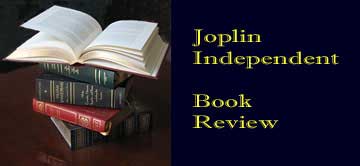
by Susan Branch
A young boy, growing up in a society that he gradually realizes is corrupt, amidst the turmoil of the 1960's--sound familiar? But this is not just another American coming of age story. Roy Freeman is growing up in Downside, a mostly Jewish enclave in South Africa. Roy and his friends worry about school, root for South African sports stars, and know less than they think they do about the outside world, as at that time the South African regime banned television as a disruptive force.
While Roy, a clever boy with a horror of cruelty, knows that there is much wrong with his society, he gradually learns that there are also serious problems within his own family. He becomes discouraged with the idea of seeing changes in South African society--the barriers to improvement seem too high. Yet Roy and those who think as he does vaguely visualize a more benevolent, but still White-dominated, government. The idea of equal rights for Black people is totally beyond him. That's the second meaning of the ironical title, White Lies, a book by Raymond Wacks.
The novel progresses in often very short, impressionistic chapters that cover not only Roy, but also his friends, his parents, their parents, and some of the servants. The chapters can jump in time, going back to the generation of Roy's grandparents, and how they came to live in South Africa.
Roy's parents Max and Sylvia are mildly liberal, mildly prosperous and, in his eyes, mildly happy; he and his younger brother Jeffrey are encouraged to speak their minds, even when Roy argues with his uncle Cecil, a judge whose career is stalled by Antisemitism, about his participation in a corrupt government structure. Some of their neighbors are not Jewish, and the boys gossip about whether any are really secret Nazis.
Roy's best friends are good looking Brian Levine, who has a pathological need to lie and steal, and Mike Nathan, who can always attract friends to help him, but who has no desire to do his own work.
When someone paints a swastika on the wall of Roy's secret hideout, Roy tries to figure out who he knows who could have done such a thing--for only someone who knows him well would be able to locate the hideout. He suspects Mr. Coetzee, the husband of his father's secretary. Coetzee called Mrs. Freeman to accuse her husband of having an affair with the secretary, a conversation Roy overhears, to his disquiet. The mystery eventually is anti-climatically solved.
Roy learns more about the Afrikans community when he meets some of them during his stint in the Army. He learns to like and admire them for their open-heartedness, despite their prejudices, never realizing the extent of his own bias. The group least represented in Roy's life, despite the fact that he, like most of his friends, have servants living in their house, are the Black people.
A few of the short, vignette-like chapters are devoted to the lives of the servants, but it is clear that Roy does not really know anything about them, any more than the prejudiced Boers do. During the period that the book covers, leaders of the African National Congress, including Nelson Mandela, are on trial as terrorists, a trial which results in Mandela's life sentence to Robben Island.
A helpful, but too short, glossary includes Yiddish, Afrikans, Sesotho, Zulu (and other) languages, as well as South African slang of the period.

Title - White Lies
Author-Raymond Wacks
Publisher - lulu.com (1st ed.,Dec. 31, 2010)
266 pp.
$18.13 (softcover) at amazon.com
ISBN-10: 1446174670
ISBN-13: 978-1446174678






Comments